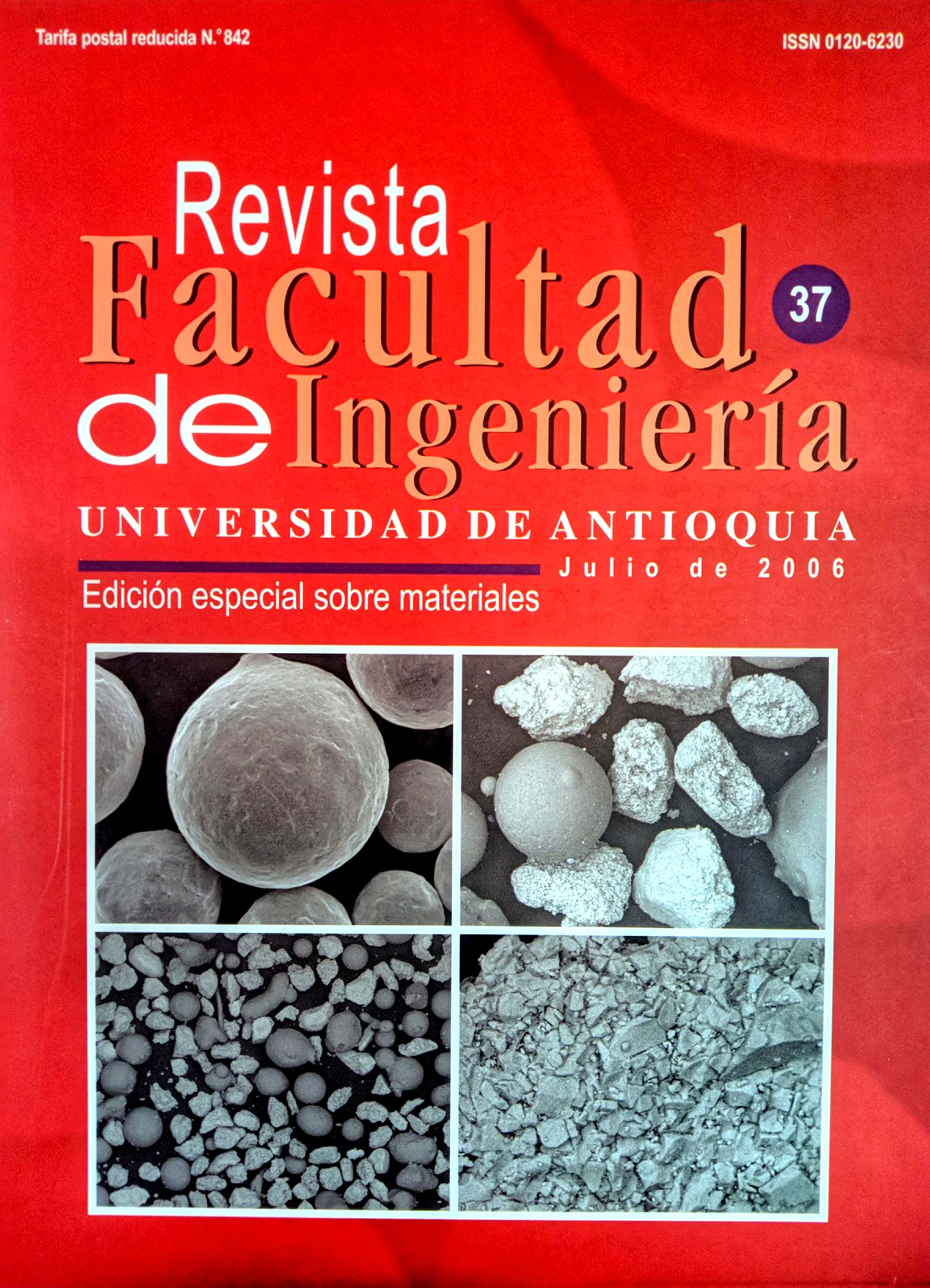Metallurgical and electrochemical properties of an Au-1,7% Ti alloy for dental applications
DOI:
https://doi.org/10.17533/udea.redin.343475Keywords:
Au-1,7%Ti alloy, Au-Pd alloy, Au-Pd-Ga-In alloy, polarization, precipitation hardening, biomaterials, corrosionAbstract
The micro-structure and micro-hardness of an Au-1,7%Ti alloy in different condi¬tions: centrifuged, solubilized and aged at 400°C during 4 hours were evaluated. Polarization curves obtained in an artificial physiological solution (Ringer) of the Au-1,7% Ti alloy, with and without surface passivation treatment, were compared to those of an Au-Pd-Ga-In alloy and pure gold. Results indicate that the Au-1,7% Ti alloy has a good response to the aging treatment in the passivated condition the alloy alsopresents a satisfactory, although lower, corrosion resistance with respect to the Au-Pd-Ga-In alloy.
Downloads
References
H. Knosp, R. Holliday, C. W. Corti. “Gold in dentistry: Alloys, uses and performance”. Gold Bulletin. Vol. 36. 2003. pp. 90-102. DOI: https://doi.org/10.1007/BF03215496
D. A. Jones. Principles and prevention of corrosion. Ed. David Johnstone Nueva York. 1992. pp 256. pp.
W. S. Tait. An introduction to electrochemical corrosion testing for practicing engineers and scientists. Ed. Pair O Docs Professionals Madison 1994. pp.
N. Horasawa, M. Marek. “The effect of recasting on corrosion of a silver-palladium alloy”. Dental Materials. Vol. 20. 2004. pp. 352-357. DOI: https://doi.org/10.1016/S0109-5641(03)00128-3
S. M. Paradiso. “Corrosion evaluation of Pd-Cu-Ga alloys”. J Dent Res. Vol. 63. 1984. pp. 175-186.
J. Lane, L. Lucas, W. Lacefield, J. O. Neal, J. Lemons. “In vitro corrosion evaluation of Pd-base alloys”. J. Dent. Res. Vol. 64. 1985. pp. 318-324.
A. M. Tasker, K. Beilstein, A. Reti. “990 Gold-a Hard, Hight Carat Alloy”. Amer. Jewelry Manufacturer. 1987. pp. 56-66.
G. Gafner. “The development of 99.0% gold-titanium: its production, use and properties”. Gold Bull. Vol. 22. 1989. pp. 112-122. DOI: https://doi.org/10.1007/BF03214709
G. Humpston, D. M. Jacobson. “A new high strength gold bond wire”. Gold Bull. Vol. 25. 1992. pp. 132-141. DOI: https://doi.org/10.1007/BF03214723
G. Gafner, G. Humpston, D. M. Jacobson. “Gold alloy data”. Gold Bull. Vol. 24. 1991. pp. 14-20. DOI: https://doi.org/10.1007/BF03214715
J. Fischer. “Mechanical, thermal, and chemical analysis of the binary system Au-Ti in the development of a dental alloy”. J. Biomed. Mater. Res. Vol. 52. 2000. pp. 678-686. DOI: https://doi.org/10.1002/1097-4636(20001215)52:4<678::AID-JBM12>3.3.CO;2-G
J. Fischer. “Effect of small additions on properties of a binary Au-Ti Alloy”. J. Biomed. Mater. Res. Vol. 18. 2002. pp. 331-335. DOI: https://doi.org/10.1016/S0109-5641(01)00058-6
J. Fischer. “Ceramic Bonding to a dental gold- titanium alloy”. J. Biomed. Mater Res. Vol 23. 2002. pp. 1303-1311. DOI: https://doi.org/10.1016/S0142-9612(01)00248-4
P. Shewmon.” Phase Transformations in Metals and Alloys. Ed. McGraw-Hill. Nueva York. 1969. pp. 32-56.
D. A. Jones. Principles and prevention of corrosion. Ed. David Johnstone Nueva York. 1992. pp.4-53.
A. Echavarría. “Caracterización electroquímica de algunos implantes metálicos para uso odontológico”. Tesis de Maestría. Universidad de Antioquia, Medellín. 2001.
Downloads
Published
How to Cite
Issue
Section
License
Revista Facultad de Ingeniería, Universidad de Antioquia is licensed under the Creative Commons Attribution BY-NC-SA 4.0 license. https://creativecommons.org/licenses/by-nc-sa/4.0/deed.en
You are free to:
Share — copy and redistribute the material in any medium or format
Adapt — remix, transform, and build upon the material
Under the following terms:
Attribution — You must give appropriate credit, provide a link to the license, and indicate if changes were made. You may do so in any reasonable manner, but not in any way that suggests the licensor endorses you or your use.
NonCommercial — You may not use the material for commercial purposes.
ShareAlike — If you remix, transform, or build upon the material, you must distribute your contributions under the same license as the original.
The material published in the journal can be distributed, copied and exhibited by third parties if the respective credits are given to the journal. No commercial benefit can be obtained and derivative works must be under the same license terms as the original work.










 Twitter
Twitter